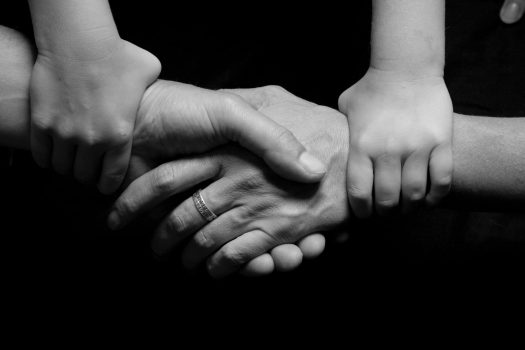By: Jason M. Jowers, MS, MFT

Growing up, I used to think that my family was pretty unique. My parents divorced when I was ten, with both remarried within a few years. And in a short span of time, my family went from the so-called “nuclear family,” to including step-parents and step-siblings on both sides. This also included navigating new relationships among the extended families of my step-parents. My viewpoint of what family looks like suddenly shifted into a much larger circle of extended family. My family story is actually more common than I realized at the time. Many friends throughout school shared similar stories of step-families and the inclusion of family members who are not biologically related. To me, blended families became the new norm and broadened my views on what constitutes as family.
Blended families are becoming much more common in our society and internationally. Researchers estimate that 40% of adults in the U.S. have a family member who is not biologically related to them (Zeleznikov & Zeleznikov, 2015). These family dynamics come about from a multitude of factors: divorce/separation of parents, death of a parent, remarriages, and possible entrance of new children to the family (Komal, 2017). And as blended families grow, relationships grow and change for all members of the family unit.
So, why is this relevant for us as service providers? What can counselors and therapists do to accommodate the needs of blended families and what to do differently within their practice? Komal (2017) suggests looking at the family life cycle and incorporating aspects of transitional stages that blended families commonly go through. This can include family and couples counseling that looks at each family system as being unique, but sharing commonalities with other blended families. Service providers can be beneficial in defining roles and expectations, as well as establishing boundaries. Communication is key; to talk about the family system as a whole and including each members’ viewpoints and feelings.
These aspects also play out in military families too, but can look even more different due to circumstances. Deployments and relocations can shift family dynamics to be more similar to that of single-parent household situations. Family restructuring takes place after a military parent or spouse potentially loses their life in combat. Even physical and mental combat injuries take a toll and can lead to more of a caregiving situation that might incorporate outsiders to come in in the role of family members. Knowing the types of issues military families face can help professionals in working with blended military families.
Change is constant; but families and the people within them have the capacity to be super adaptable. Feel free to share with us your experiences in the comments below!
References
Komal, K. (2017). The Blended Family Cycle. Journal of Divorce & Remarriage, 58(2), 110-125, http://dx.doi.org/10.1080/10502556.2016.1268019
Zeleznikow, L., & Zeleznikow, J. (2015). Supporting blended families to remain intact: A Case Study. Journal of Divorce & Remarriage, 56, 317–335. http://dx.doi.org/10.1080/10502556.2015.1025845
This post was written by Jason M. Jowers, MS, MFT, of OneOp. The team aims to support the development of professionals working with military families. Find out more about OneOp on our Facebook and Twitter. You can also listen to our Anchored. podcast series via iTunes and our website.
Blog Image: Photo from Pixabay [Family in Black and White by GiselaFotografie on April 13, 2016, CC0]












